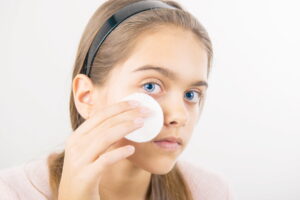By Iris Farrou
08 Dec, 2022
Lifestyle Tips, Mental Health, New Moms, Parenting, Pregnancy, Queer Health, WNY Ob-Gyn News, Your baby's health
Baby's First, Chanukah, Children, Christmas, family time, Hanukkah, Holiday, holiday stress, Holidays with a Newborn, Kwanza, Mental Health, Newborn, Young Children
 It is widely known that holidays are one of the most stressful times of the year– though toddlers and children seem to enjoy them, and there is a certain magic that comes with it all, we should remember this comes at the expense of parents, and especially mothers. Holiday stress increases if you have just welcomed a new member in your family, and are trying to juggle a newborn baby and holiday traditions. There is no simpler way to put it than: focus on you and your baby. As a new mother, this is honestly the only thing you should be worried about; keeping yourself and your baby healthy and safe. However, reality is not always ideal. Here are some tips that may help lessen the holiday stress if you are facing such an incredible combination:
It is widely known that holidays are one of the most stressful times of the year– though toddlers and children seem to enjoy them, and there is a certain magic that comes with it all, we should remember this comes at the expense of parents, and especially mothers. Holiday stress increases if you have just welcomed a new member in your family, and are trying to juggle a newborn baby and holiday traditions. There is no simpler way to put it than: focus on you and your baby. As a new mother, this is honestly the only thing you should be worried about; keeping yourself and your baby healthy and safe. However, reality is not always ideal. Here are some tips that may help lessen the holiday stress if you are facing such an incredible combination:
- Change your expectations: you already knew your life would drastically change with a newborn, and if this happened into the holiday season there is no reason why this would be any different. We are creatures of habit and there is something comforting in having a decorated house, attending family gatherings, consuming holiday food, and participating in festivities. However, letting go of traditional expectations with a newborn during the holidays can significantly lessen your stress, and help you get through the season in a calm, and happy, manner. Nobody expects you to be the perfect hostess, or even guest, if you have just given birth– and you should not be expecting that of yourself either. Meals can wait, Christmas trees can become a simple wreath or a premade tree, but your baby’s first few weeks will not come back: savor that time with your family, and all else will come in due time.
- Simplify your days: to-do lists and preparations often become hectic around the holidays (more so than usual!). Remember, however, that this is not the time to go all out on Christmas decorations, gifts, meals, or anything else. If you feel like you have the energy for some of it, or if leaning into the holiday spirit will help you to feel less stressed, be selective with what you choose to put on your plate. Perhaps a short visit to the Christmas market this year is more manageable than standing long hours at the mall to see Santa– it may be more enjoyable, and leave you with some energy for the rest of the day. Or, you can have a family gift craft session at home instead of going out at all.
- Ask for help: isn’t helping others part of the holiday spirit? Why not take advantage of that now more than ever, and lean into your close family and friends to assist you in holiday activities, bring the festivities into your home or in a chill space, and help take care of you and your newborn? Select people you trust, set boundaries on how much or how little you can handle, and shape up those days in a design you can easily manage. Delegating responsibilities during this time is the best gift you can give to yourself, and you would be surprised how many people will be happy to offer their assistance in practical ways!
There are ways to embrace the holiday spirit and experience the magic of the festive season that don’t have to exhaust you; if you and your newborn are healthy and feel like you can manage a balance between traditional holiday activities and new ideas or reconfigurations, experiencing the magic in small ways will be extremely rewarding!
https://theeverymom.com/family-traditions-creative-new-ideas/
https://healthblog.uofmhealth.org/childrens-health/could-holiday-stress-be-affecting-your-childs-holiday-joy
More
By Iris Farrou
01 Nov, 2022
Breast health, Breastfeeding support, Lifestyle Tips, New Moms, Parenting, Pregnancy, Queer Health
Benefits of breastfeeding, Breastfeeding, New Moms Returning to Work, Working Moms, Working with a Newborn, Working with an Infant
Most new mothers dread the day they’ll have to return to work and leave their newborn at home, or at a daycare facility. It is undoubtedly difficult to get back into a work/home routine when you feel like you haven’t had enough time with your newborn baby–and in most cases, mothers in the Western World do not receive adequate maternal leave. The situation is made even more difficult for mothers who breastfeed their babies: a newborn requires a rigid feeding schedule, and the nursing mother cannot risk interrupting her body’s breastfeeding schedule.

Breastfeeding babies in the workplace is almost unheard of, unless you work from home or your employer provides newborn daycare right in your work building. What most nursing mothers are faced with is the option to express milk in the workplace.
Even though in 2010 Congress made an amendment to the Fair Labor Standards Act by passing the Break Time for Nursing Mothers Law, many new mothers face breastfeeding discrimination in the workplace. This primarily means that work environments do not offer appropriate accommodations for nursing mothers to express milk in a clean, sanitized, and private space. It also means, as a 2004 study has also shown, that workplaces do not provide new mothers with enough breaks during an 8-hour workday for them to adequately pump and maintain their milk production. In short, you should not be running to your car, unbuttoning your blouse as you’re running to the underground garage, adjusting the pump in the elevator and pumping for 10 minutes in your vehicle: you have waaaay more rights than that, and employers are required by law to provide you with accommodations.
Before we look into some of the ways in which employers can support new mothers, we should say that workplaces which show consistent support to new mothers and their needs tend to have a more positive work environment, and thus are more likely to be successful in their labor.
- Adequate Private Space & Appropriate Amenities: workplaces are required to provide a private space for nursing employees that is not a bathroom. This doesn’t need to be a permanent space; it can be a temporarily converted office with a lock on the door, and with the reassurance that other employees cannot see into the room. Ideally, this space should also have electrical outlets, a sink, a comfortable seat and not harsh fluorescent lighting, and a small fridge for milk storage. Some places partner with other locations that do have a dedicated lactation room to provide their employees with the necessary facilities.
- Reasonable Break Time: nursing employees should be allowed enough breaks to adequately pump at least 2-3 times during an 8-hour workday, and this should come with the understanding that the necessary time differs based on each person. There should be no negative consequences or withheld compensation for the time an employee needs for pumping during the workday.
It is of extreme importance to have a written lactation policy that outlines the employees’ rights and the employers’ responsibilities when it comes to nursing individuals. If you have concerns about this policy at your workplace, you can consult the US Department of Labor, or the United States Breastfeeding Committee.
https://www.dimaghawi.com/dimas-blog/4-important-ways-to-accommodate-nursing-mothers-in-the-workplace
https://www.womenshealth.gov/supporting-nursing-moms-work/what-law-says-about-breastfeeding-and-work/what-employers-need-know#1
More
By Iris Farrou
07 Sep, 2022
Diet & Exercise, Health Conditions and Pregnancy, Heart health, Lifestyle Tips, Mental Health, Parenting, Postpartum, Pregnancy, Prevention, Queer Health, Reproductive health, Women's Health
Body Changes in Pregnancy, body positive, Body Positivity During Pregnancy, Body Positivity While Pregnant, Eating Disorders and Pregnancy, Healthy Lifestyle, Healthy weight gain pregancy, How much weight should I gain in pregnancy, How to manage weight during pregnancy, how to prepare body for pregnancy, Weight Gain Support
If you have armed yourself with all the knowledge you can gather regarding the possible changes
on your body during pregnancy, then you are one step closer to dealing with the physical effect
of those changes. Some women, though they do know their body will change during pregnancy
and possibly afterwards as well, do not seem to mind it at all. Great! According to a survey of
more than 1500 women, just over 41% said they felt more negative about their bodies after
pregnancy. Which goes to show: the majority of women are struggling with body image while
pregnant. Not to mention what the body image stress is probably not helping the baby…

Is this only related to pregnancy?
Of course not… women in general are held to unrealistic expectations of beauty standards—expectations that the media and society constantly repeat. In recent years, this pressure for body perfection has worsened with the rise of social media. What is worse in pregnancy, however, is that the changes are relatively rapid, weight gain is almost always expected, feelings are exacerbated, and you may even be feeling alien in your own body. A vessel, so to speak. All of these are true: you will most likely gain weight during your pregnancy, it’s possible to develop stretch marks, and it is also a possibility that your post-partum body will not be 100% the same as your pre-pregnancy body.
This is a lot…
Yes, this can absolutely be overwhelming. Despair not! Weight gain is—and we cannot stress this enough—normal, and healthy for your baby. Also, if your doctor or nurse gives you the green light, you can exercise while pregnant. It may be light exercise, such as swimming or walking, or pre-natal yoga. These options help make you more aware of the connection between your body and your mind, perhaps take some of the edge off and your mind off of your worries and are steps to ensure the overall health of your body.
If you are concerned about weight gain during pregnancy, make a plan with your doctor, nurse, or mid wife, about your diet. Allow yourself the small pleasures without guilt: your body is participating in the miracle of nourishing a new life. There is no way to make this happen in a healthy manner unless you experience changes yourself.
What else can I do?
Honestly, don’t bottle up your feelings. Being insecure about, or even disappointed with, your
body image is completely normal. Share those feelings and thoughts with your partner, talk about
those worries with your friends. You may want to join a mom group, or even an online
discussion forum where you can exchange ideas with others on the same boat. If it gets too
much, you can always talk to a medical professional or a therapist. Even if you didn’t have body
image issues before pregnancy, it is not uncommon that future mothers start facing those worries
for the first time when they become pregnant. You are not alone in this!
More
 Probably every parent’s concern is that their child is developing in the best possible, healthy way. You may have heard of developmental milestones, but what do they really mean?
Probably every parent’s concern is that their child is developing in the best possible, healthy way. You may have heard of developmental milestones, but what do they really mean?
First and foremost is important to remember that every age has different developmental characteristics and milestones you should keep an eye on. When it comes to a newborn, parents are mostly keeping track of movement, visual and hearing, and social and emotional milestones. When you have a toddler, you start paying attention to hand and finger skills, as well as language and cognitive development.
Why is it Important?
The CDC reports that 1 in 6 children aged 3-17 have at least one developmental, or behavioral, disability. The problem is that many children are not diagnosed until they are in school, by which time the window of opportunity for important treatments may have passed, and significant delays may have taken place. The good news is there are ways for you to monitor your child’s development! The CDC offers not only a Checklist by age, but also a Milestone Tracker App you can use.
The Process
- Monitoring
Developmental milestones can easily be monitored at home, with the help of some simple resources. Remember that what they refer to are things about 75% of children can do by a certain age. You can observe how your child grows and changes over time, and whether they meet the typical milestones of their age.
- Screening
If you have concerns, or notice a milestone is missed, then you can proceed with developmental screening, a closer look, and a test to see how your child is developing. Though it can be a part of regular health screenings, a doctor can use a questionnaire and checklist to monitor your child’s progress in language, thinking, movement, behavior, and emotions. The American Academy of Pediatrics suggests developmental and behavioral screenings at ages of 9, 18, and 30 months, regardless of concern. In addition, it is recommended that all children be screened for autism spectrum disorder at 18 and 24 months.
- Evaluation
Should an area of concern be found, then your medical professional will usually proceed with a developmental evaluation to try and reach a diagnosis. These are done by trained specialists, such as a developmental pediatrician, child psychologist, or speech-language pathologist, among others. The specialist will observe the child, speak with the caretakers or parents, and even give the child a structured test. Usually, developmental evaluations determine whether a child needs early intervention services or special treatments.
More
 Every parent expects their sweet babies will one day grow into hormonal teenagers, with changes in their appearance and their attitude. Some dread this change, but it’s none other than teens themselves who have to deal with their bodies changing, smelling differently, and deal with skin care and acne!
Every parent expects their sweet babies will one day grow into hormonal teenagers, with changes in their appearance and their attitude. Some dread this change, but it’s none other than teens themselves who have to deal with their bodies changing, smelling differently, and deal with skin care and acne!
What Happens to the Skin?
In a single word: hormones. Puberty begins around age 9 or 10, when the hypothalamus releases a gonadotropin-releasing hormone (GnRH). This hormone travels to the pituitary gland, which is a small gland under the brain that produces hormones which control other hormones in the body. When GnHR reaches the pituitary gland luteinizing hormone (LH) and follicle-stimulating hormone (FSH) are released. These two are responsible for the development of the reproductive system. At the same time, the adrenal glands produce adrenal androgens, which cause body hair growth. But the biggest concern is the skin glands, which produce the natural oil sebum. Puberty hormones increase the amount of sebum, which clogs the pores and causes skin care and acne problems.
Proper Skin Care
The first way to deal with acne is natural methods. It’s important to keep the skin clean by washing gently, and regularly, with warm water and a mild soap. Pat dry with clean tissues to reduce the risk of oil transfer between uses. It’s also important keep your hair away from your face for the same reason: oil transfer. With changing hormones, you may notice your body odor becoming stronger. Regular showers are necessary now more than ever, as bathing ensures your hair is kept clean. Fresh pillowcases can also work wonders!
There are numerous over the counter skin care products you can use when washing your face, and it’s a good idea to exfoliate at least once a week. For persistent pimples, you can try drying them out using some isopropyl alcohol on a cotton round. Cleaning your face with a cotton round dipped in alcohol, or using alcohol wipes, is also a great way to dry out some of the excess oil and help your pores unclog.
Dermatological Methods for Skin Care
Some cases of acne may be more serious, and in need of a dermatologist’s assistance. The first mild, topical, medication a doctor may suggest is retinoid drugs gel or lotion form which is to be applied in the evening and prevents clogging of hair follicles. Azelaic acid is another option, a naturally occurring acid produced by a yeast. It has antibacterial properties and has been known for its effectiveness. Salicylic acid is another option, but studies show it’s not as effective. Inflammation and excess skin bacteria can be treated with some mild antibiotics, often used with benzoyl peroxide to reduce the risk of antibiotic resistance.
If acne persists after topical medications, it may be time for oral medications. These are the highest tier of acne treatment, but if you have any concerns about these changes and this process, it is highly recommended you reach out to a medical professional.
More
By Iris Farrou
30 Sep, 2021
Parenting
Best gyns in Buffalo, Best OB practices in Buffalo, Best OBGYN Groups in Buffalo, Buffalo OB-GYN, Buffalo OBGYN, Chouchani MD, WNY OB-GYN, WNY Ob-gyn doctors, WNY OBGYN, women's health
 Co-sleeping is the practice of sleeping with your newborn baby. There are many schools of thought and opinions on the safety, psychological effects and risks associated with the practice. Reviewing factual studies and professional resources on co-sleeping highlights that wanting to sleep with our infants and young children is perfectly natural, and only increases the risk of SIDS by 0.004%. When compared to the 0.006% chance of an infant dying from SIDS alone in their crib, the numbers speak for themselves.
Co-sleeping is the practice of sleeping with your newborn baby. There are many schools of thought and opinions on the safety, psychological effects and risks associated with the practice. Reviewing factual studies and professional resources on co-sleeping highlights that wanting to sleep with our infants and young children is perfectly natural, and only increases the risk of SIDS by 0.004%. When compared to the 0.006% chance of an infant dying from SIDS alone in their crib, the numbers speak for themselves.
Basic Benefits
Western culture has a history of separating mothers and babies at night, compared to other parts of the world that encourage co-sleeping more. As most mother know, sleeping separately from the baby leads to many sleepless nights for all members of the family, physical exhaustion for the caretakers, and of course a disruption of the sleeping cycle that transfers over to the next day.
Though many may believe that adult beds are not safe for the baby—and there is merit to that opinion—what the other school of thought boils this down to is the way in which the mother’s body cocoons the infant to protect it while sleeping. Similar to that is the positioning of the mother’s body when breastfeeding: she bends to form a protective shell around her baby. Mother and infant heartbeats and breathing both slow. The mother’s heartbeat soothes her infant, and the carbon dioxide the mother breathes out stimulates her baby’s breathing.
When co-sleeping, these same positive effects occur, and studies show that the babies move far less when sleeping with their mother than sleeping in their cribs alone, where they tend to toss and turn all through the night.
Tips for safe co-sleeping include:
- Guardrails to prevent the baby from falling off the bed.
- Position the baby adjacent to the mother instead of between the mother and father.
- Large beds, king-sized in particular, allow for plenty of space for safe co-sleeping.
- Make sure to place the baby on their back while sleeping.
- If placing the baby in your bed isn’t possible, a crib next to the bed keeps the baby at arm’s reach.
Do not co-sleep with your baby or young child if you are under the influence of alcohol or any drug, including sleeping medications or sedatives. Also, if you’re overly exhausted, avoid co-sleeping and breastfeeding on extremely soft surfaces to not accidentally cut air flow to your child. If you are extremely obese or the child’s babysitter, co-sleeping is highly advised against.
Behavioral and cognitive development outcome studies also show that co-sleeping is not only safe and healthy but promotes healthier minds and bodies while children grow as well. Consult your GP or OBGYN if you have any questions or concerns about co-sleeping, or for individualized advice.
More
As schools begin to increase the amount of in-person instruction, safety measures should still be in place. Experts advise that we keep COVID-19 precautions meticulously, so we may be seeing the next school year starting with necessary safety measures.
Explaining Safety Measures to your Kid
- Teach them about COVID: Kids are more likely to follow safety measures if they understand why: what the virus is, how it spreads, and its seriousness. You should use kid-friendly language to explain a global pandemic, and school kids should understand the virus is something dangerous that goes from one person to another, consists of invisible particles, makes people sick, and can be transmitted from an asymptomatic person.
- Model Behavior: Remember that your kids see you as a role model: it matters more what you do than what you tell them to do. Practice safety habits at home and set an example that your kids are likely to follow even when you are not around or supervising them.
- Promote Mask Wearing: Though this may be taken for granted, we need to remember that children experience masks differently from adults. Definitely teach your children how to wear a mask properly, but keep in mind, to them a mask is a nuisance or an item to play with. Consider letting your children choose their masks so they feel they are participating and let them decorate their masks—a practice that makes them feel proud of the results, and therefore increases the chances of them taking care of their masks.
- Encourage Safe Distancing: Children are naturally drawn to social interactions and if they like experiencing the world in tangible ways the risk of infection is augmented. You can promote group activities and sports that make social distancing easier, while still maintaining comradeship: bike riding, hopscotch, skateboarding or an obstacle course are some suggestions.
Integrating Changes
The safety measures outlined above combine the “new reality” under COVID with elements kids are used to. Just like adults, children can adjust their perspective through understanding the necessity for new habits. As far as the return to school is concerned, since there are so many new elements to get used to, you can alleviate some of the stress by keeping a semblance of normalcy in the following standard, i.e. pre-Covid, ways.
- Prepare for the first day of school by purchasing school supplies, becoming familiar with the school and classrooms, attending orientations, and getting to know the teachers (probably virtually).
- Practice the school route with your kid: whether that is driving them, walking them, biking with them, or preparing them to do the route alone in the future, do a few trial runs with your kid before the big day.
- Consider implementing the school sleep schedule earlier than usual, so that if there are home-school or half days your child’s routine is not terribly disrupted.
More

Whether your child is back at school in-person, hybrid or e-learning, getting your child to focus on distance learning can be challenging. Parents are expected to be more involved and support hybrid and distance learning. But, remember, it’s also challenging to children because they are being asked to participate and engage with new learning modalities. Without an effective plan, it can be easy for children to become disengaged, causing frustration for the entire family.
Here are some tips for helping your kids get and stay on track.
- Adjust your expectations—hybrid and distance learning are not going to be exactly like full-time, in-person classes. Being in front of a screen all day is both mentally and physically taxing. While high schoolers can do work for longer periods of time, younger children will need more breaks and time for play.
- Make a flexible schedule—synchronous sessions (real-time video sessions with their teachers) helps structure the day and keeps a schedule, but it also leads to screen burnout. The amount of synchronous learning varies by school district, but many children are doing some work asynchronously (on their own). Making a schedule and dedicating time for all classes will help with consistency, but being flexible is recommended. This means, allow children to power through a task if they are focused and engaged, however, be willing to give children breaks when they seem overwhelmed.
- Take physical exercise breaks—sitting in front of a screen all day is draining, so it may seem like the best break is sitting and not looking at a screen, but actually the best break is being active. While some research claims that it’s best to get 10 minutes of physical movement for every 50 minutes of being stationary, incorporating as few as two (15-20 minute) exercise breaks in the day will immensely help you and your kids focus. Exercise ideas include short walks, bike rides/stationary cycling, yoga/stretching videos, and free weights.
- Reduce distractions by cultivating an ideal setting—when designating workspace for your family, do your best to reduce noise or clutter. Consider playing instrumental music or nature sounds to drown out any distractions that could distract from learning. Designate each family member their own clean, hard surface workspace such as a desk, kitchen table, or even a folding table. The key is to spread out enough so everyone has their own space.
- Rely on a checklist—help your kids stay organized by using a check-list system. Consider doing it by hand rather than digitally. Whiteboards are a great idea. Get one per family member, so that everyone has to take some responsibility for their own work.
- Give positive feedback—children need reinforcement and they are likely getting less from their actual teachers in hybrid and distance learning situations. Be sure to give your kids positive reinforcement when they have done a good job.
Above all else, stay positive and keep moving forward. Change is inevitable. Do your best to be adaptable to better handle and adjust to changing learning situations.
More

The vast amount of online resources on healthy eating and living can be overwhelming. On average, women need between 1,600 and 2,400 calories per day. However, there is so much more involved than simply targeting a number. Healthy eating involves some basic principles for food selection.
- Whole foods: Choose whole ingredients over pre-made food, as processed foods contain added sugars. This means, opt for proteins, fruits, and veggies that are in their natural state. For example choose an apple over applesauce or apple juice. Consider adding honey and nuts to plain oatmeal instead of pre-packaged honey nut oatmeal. Remember, every choice adds up.
- Lean protein: Chicken, turkey, fish, eggs, beans, and tofu are great sources of protein with low calories. Avoid fattier meats such beef and bacon.
- Whole grains: Whenever possible choose brown rice over white rice and wheat bread over white bread. While white bread and rice may taste smoother, they lost many nutrients during the refining process.
In theory, this all sounds super easy. Of course, everyone knows chicken is healthier than beef, and we should all eat our veggies! However, so many people rely on packaged foods for convenience. Many women have families to also think about, so fast and convenient is important. Thus, we’ve put together a roundup of the best online resources to help you get started.
Meal prep: While it may sound like a ton of work, meal prepping doesn’t need to be an all-day affair. Check out 25 Healthy Meal Preps and Skinnytaste for numerous recipes to get started on meal prepping. Remember, even meal prepping just one meal per day (yogurt parfaits or overnight oats for breakfast, or hearty soup for lunch) will save you time and calories.
Time-saving dinners: Yes, it’s so very tempting to pick up Panera, Chipotle, or even Buffalo’s favorite, Mighty Taco, on your way home. It’s quick and your entire family will eat it. Eating out once a week isn’t too bad, but anymore than once and the calories will add up. Consider quick and healthy weeknight meals by opting for pre-cut proteins such as ground turkey and chicken breast tenderloins. Additionally, Buffalo-area grocery stores, such as Wegman’s and Dash’s, offer many options for pre-cut fruit and veggies. For fast dinner ideas, check out Cooking Light, Taste of Home, and Olive.
Helpful Apps: Even with making some changes in your diet with a focus on whole foods, lean protein, and whole grains, it may still be hard to find your ideal body weight. There are so many online resources and phone apps, but our favorites are MyFitnessPal and iTrackbites (similar to the Weight Watchers concept). Both are free (though you can update for a reasonable fee for a premium) and are easy to use. In addition, you can download the app to have quick access to log food on your phone.
More
With most folks working and sheltering at home due to the onset of covid-19, many parents are looking for ideas to keep the kids busy. While limiting screen time hardly seems like a fight worth going to battle over right now (let’s face it, all parents need some quiet time), this list was designed to find hobbies to occupy your kids!
More
 It is widely known that holidays are one of the most stressful times of the year– though toddlers and children seem to enjoy them, and there is a certain magic that comes with it all, we should remember this comes at the expense of parents, and especially mothers. Holiday stress increases if you have just welcomed a new member in your family, and are trying to juggle a newborn baby and holiday traditions. There is no simpler way to put it than: focus on you and your baby. As a new mother, this is honestly the only thing you should be worried about; keeping yourself and your baby healthy and safe. However, reality is not always ideal. Here are some tips that may help lessen the holiday stress if you are facing such an incredible combination:
It is widely known that holidays are one of the most stressful times of the year– though toddlers and children seem to enjoy them, and there is a certain magic that comes with it all, we should remember this comes at the expense of parents, and especially mothers. Holiday stress increases if you have just welcomed a new member in your family, and are trying to juggle a newborn baby and holiday traditions. There is no simpler way to put it than: focus on you and your baby. As a new mother, this is honestly the only thing you should be worried about; keeping yourself and your baby healthy and safe. However, reality is not always ideal. Here are some tips that may help lessen the holiday stress if you are facing such an incredible combination: 








